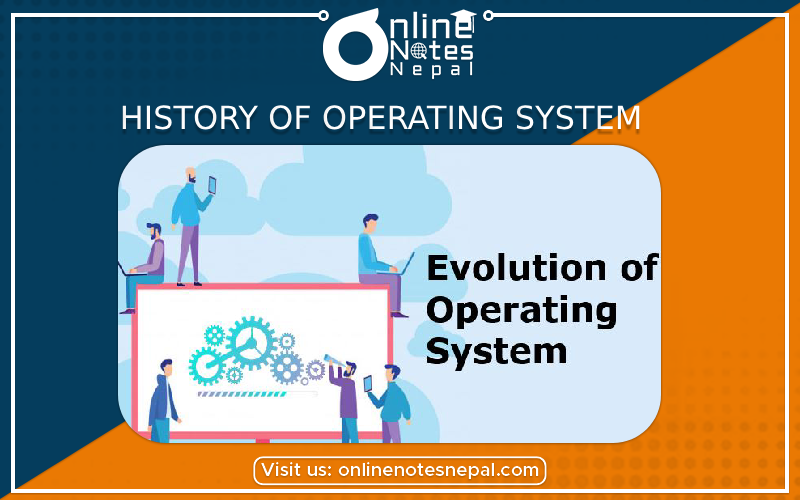Published by: Anu Poudeli
Published date: 31 Jul 2023

The history of operating systems (OS) is an enthralling trip spanning numerous decades of technological progress. Operating systems are a critical software layer that governs computer hardware and serves as a foundation for application execution. Let's have a look at some of the most significant milestones and advances in the history of operating systems:
1.Early Computing: The earliest electronic computers were developed in the 1940s and 1950s. Because there were no operating systems on these early machines, users had to communicate directly with the hardware using machine language or low-level programming.
2.Batch Processing Systems: Batch processing operating systems first appeared in the late 1950s and early 1960s. They allowed users to submit work in batches, which the system would then process one by one. The IBM OS/360 and the Burroughs MCP are two examples.
3.Time-Sharing Systems: Time-sharing systems first appeared in the 1960s. These let numerous people to communicate with the computer at the same time via remote terminals. Multitasking and multi-user capabilities were made possible by time-sharing systems. CTSS (Compatible Time-Sharing System) and Multics are two notable instances.
4.Unix: Developed in the late 1960s and early 1970s at AT&T's Bell Labs, Unix changed operating system design. Unix pioneered several key technologies, including hierarchical file systems, pipes for inter-process communication, and the shell, which allowed users to interact with the system via commands.
5.Personal computers and graphical user interfaces (GUIs): The 1980s saw the emergence of personal computers and, with them, graphical user interfaces (GUIs). Operating systems such as Apple's Macintosh System Software (later macOS) and Microsoft's Windows gained popularity, making computers more accessible to the general public.
6.Dominance of Microsoft Windows: Throughout the 1990s and early 2000s, Microsoft Windows dominated the PC operating system industry. Windows 95, 98, and XP were popular operating system versions.
7.Open Source Movement : The 1990s also witnessed the rise of the open-source movement, with Linux serving as its flagship operating system. Because of its open nature and community-driven development, Linux, which is built on Unix ideas, has become a popular choice for servers, embedded systems, and even desktop computers.
8.Mobile Operating Systems: Mobile operating systems became popular in the 2000s. Symbian, iOS (Apple), and Android (Google) are a few examples. Because Android is open source, it has achieved enormous market share and has become the most extensively used mobile operating system worldwide.
9.Cloud Computing and Virtualization: Cloud computing and virtualization technologies evolved in the 2010s and beyond, altering how services are delivered and maintained. Virtualization allows numerous operating systems to run on a single physical machine, but cloud computing offers scalable and on-demand resources over the internet.
10.Modern Operating Systems : Modern operating systems have evolved to be more secure, efficient, and capable of supporting a wide range of devices, including classic PCs, smartphones, tablets, IoT devices, and servers.
11.Internet of Things (IoT) Operating Systems: As the Internet of Things (IoT) has grown in popularity, customized operating systems have emerged to run on resource-constrained devices such as embedded systems and sensors.
The history of operating systems is one of continual innovation, with each improvement drawing on previous achievements and lessons learnt. Operating systems will definitely adapt to meet future demands as technology continues to grow.